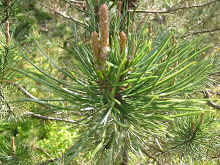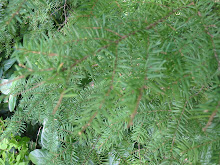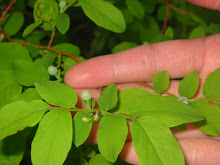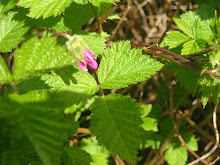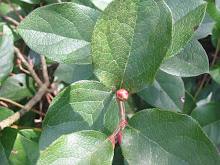 |
| Labrador tea with flowers: photo: Marian De Gier Design |
 | ||
therapeutic labrador tea: note fuzzy brown hairs underneath leaves
|
Camosun bog is part of the territory of the Musqueam X'muzk'i'um. 150 years ago, in the Pacific Northwest, your grandma might have sent you to the Bog to pick Labrador tea if your little brother was coughing. You had to be careful, because if you picked Kalmia instead, your little buddy would be vomiting.
CAUTION: The tea can cause drowsiness and can act as a strong diuretic, cathartic or cause intestinal disturbances. The tea should be used infrequently and strong tea avoided.











